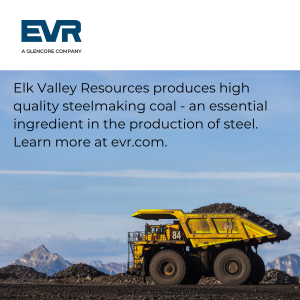What does it really mean when the City of Fernie attains a permit to discharge “treated effluent” to the Elk River?
For many residents, seeing a notice in the paper or online that the City is discharging wastewater to the Elk River is alarming. It may bring many questions to mind. For example: is the City actually dumping our raw sewage in the river!? Obviously, this would be unacceptable! I hope this short article may serve to educate and ease concerns around these advisories.

Q: How does Fernie’s wastewater treatment system work under normal circumstances?
Usually, these are the three stages of treatment:
1. waste water is filtered and large debris is removed,
2. waste water is pumped to treatment facility and into a series of three lined ‘aeration basins’,
3. after aeration basins, water flows into un-lined ‘infiltration basins’ where it is discharged into the ground, entering the ground water system and eventually the river.
The majority of the treatment happens in the aeration basin using biological methods. This means that bacteria are used to break down the waste. The air pumped into the systems provide dissolved oxygen which the bacteria require. Waste water (called effluent once treatment begins) travels through each of the three aeration basins before being send to the infiltration basins. The last stage of treatment uses the natural soils and gravels as a final filter before water will make its way back to the river. Overall, this is more of a ‘passive’ system, i.e. letting natural processes do the work. The downside of this system is that it takes time. Under normal circumstances, this is not a concern, but under very high flows the system cannot fully treat all the water passively. Also, if the water level is high, it will take especially long for water to exit the infiltration basins (the ground is already saturated so the water doesn’t really have anywhere to go).
Q: What happens under discharge conditions?
When discharge to Elk River occurs, a different system of treatment is used. Water is still filtered and aerated as outlined above. However, instead of being left to infiltrate into the groundwater system, it is pumped through Fernie’s new (since fall 2015) secondary treatment system. Effluent is then redirected to a holding cell for 10 days where a flocculant (alum) is added. The flocculant settles out any remaining suspended solids in the water. After the holding time, water is filtered using a UV system which sterilizes any organisms potentially still living in the water. Lastly, the now fully treated effluent is pumped to the outfall where it is mixed into river flows. This type of system is known as active treatment. It has a shorter turn-around time, but is more costly to operate.
Q: What circumstances lead to discharge and secondary treatment system?
Generally, a discharge to Elk River happens when there is significantly higher than normal wastewater volumes. Contrary to what one might think, it’s not when we’re flushing toilets more often or there are lots of tourists in town… It’s actually when Fernie gets high volumes of rain or rain on snow events. It happens because Fernie has old infrastructure and many leaky pipes. The City is working hard to mitigate these problems and repair pipes in a priority sequence. In the meantime though, water is actually leaking into the sewer systems. This happens because sewer systems have little material in them so they are not pressurized. It is the opposite of a leaky water pipe, which has water under pressure that would flow out. Therefore, when Fernie receives large amounts of rain/rain on snow, there is lots of extra “storm water” flowing into the waste water system. Of course, once the rain water has entered the system, it must be treated in the same manner as waste water.
For more information, visit the City of Fernie’s waste water treatment FAQ page.
By Ayla Bennett, ERA
























